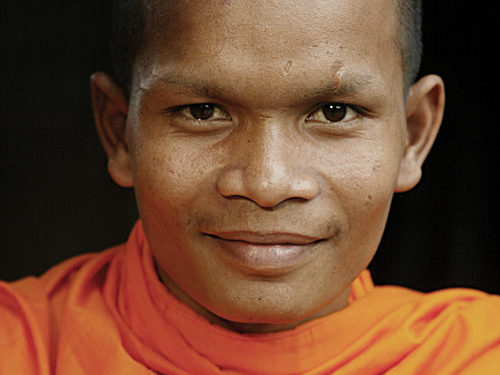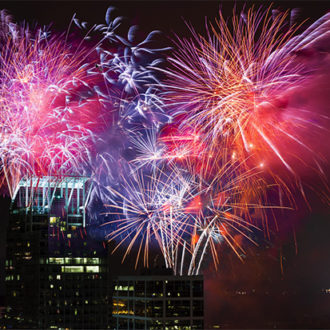Feel the Photograph

When you take control, you become the director of the shoot…

“I don’t think, I feel.” That’s what Keith Richards said about playing guitar onstage in Shine a Light, the Martin Scorsese film of the Rolling Stones’ performance at the Beacon Theatre in New York City. A must-see, in my book!
I like that philosophy and have thought about photography the same way for years. I feel that a photographer must know exactly what all the buttons, knobs, dials, and settings do on a camera so that when he or she sees a shot, the process becomes more about feeling than thinking about the technical side of photography (this must become second nature).
In this column, I’ll share a few of my favorite philosophies about feelings and photography that I’ve gathered over the years. So sit back and don’t think about RAW versus JPEG, white balance, ISO settings, etc. Instead, think about the feel of a photograph.
The camera looks both ways…
When it comes to photographing people, the most important photo tip I can share with you is this: “The camera looks both ways—in picturing the subject, we’re also picturing a part of ourselves.” “Every picture is a self-portrait” is another way of conveying that point. Let me explain:
When you’re looking through your camera’s viewfinder, viewing and framing a subject, if you realize that the feeling, emotion, attitude, and energy you project will be reflected in your subject’s face—and eyes—you’ll get a higher percentage of pictures that you like. That’s because, by your actions, you’re subconsciously directing the subject to mirror the way you feel.
I don’t have to tell you what I was feeling at the moment when I snapped the photo of the Buddhist monk that opens this column. Well, even though I don’t have to tell you, it was a feeling a great respect.
Make pictures, don’t just take pictures
Rather than simply taking pictures—pointing you camera, composing the scene, setting the exposure, and focusing—take your time and make pictures.
Making pictures is not only fun, it’s part of the creative photography process. When you take control, you become the director of the shoot, just as a movie director takes control of the scenes he or she shoots.
In this cowboy portrait, look closely and you’ll notice the reflection of a horse in the cowboy’s sunglasses. That, of course, was no accident. The horse and the cowboy were carefully placed in such a way as to capture the horse’s reflection. The relatively plain background was also no accident. I selected the side of the red barn so that the subject stood out prominently in the scene.

Be aware of body language
Sometimes we get so caught up in the technical aspects of photographing people and their facial expressions that we forget how body language affects how we feel about the subject. Compare these two photographs of a woman I photographed in Marrow Bone Springs, Texas. In the dressed-down photograph, the woman is gripping the post with “man hands.” In the other photograph, she’s holding it in a feminine manner. By the way, the woman is a model, and is actually the person who taught me about man hands.


Portrait vs. environmental portrait
Basically, when you take pictures of a person, you have two choices: You can choose to take a portrait (head or head-and-shoulders shot) or an environmental portrait (a picture that shows the subject in his or her environment). Both types of portraits can be effective, and I often photograph a subject both ways.
The first picture of Taraino women, taken in Amazonas, Brazil, is my favorite environmental portrait from my brief photo session in the village, which lasted only about an hour. Looking at the photograph, you can see the surrounding rainforest, and you also get an idea of the women’s clothing and body painting. Those elements help tell the viewer something about them, where they live, and what it might feel like to live in the location.

Check out this shot. It’s a nice portrait of the woman on the right in the first photograph; however, because we can’t see the environment, we don’t feel as though we’re “on location,” so to speak, with the photographer.

Convey the feeling
Compare these two pictures of some dancers at the Columbia Restaurant in Ybor City, Florida. For one picture, I set my camera on the Program mode and used a flash. It’s not a very creative photograph. But more importantly, it doesn’t convey the beautiful movement of the dancers. Insert G2.jpg
Check out the other shot. Here, I set my camera on Manual, set the shutter speed to 1/6 (a relatively low shutter speed), turned on a flash, and shot. The combination of using a slow shutter speed and the flash helps the viewer to feel the emotion of the scene.

Be there and be aware
Most of the photographers I know agree with this expression: The hardest place to take pictures is in your own backyard. That’s why we travel to different locations around the country and the globe: to get inspired—to feel an affinity with the subject.
I took this picture in Kingdom of Bhutan, which sits on the right shoulder of India. How can you not get inspired and be driven to taking the best possible pictures when experiencing a scene like this one?

So being there in a new, interesting, and inspiring location is important for many photographers. If you can’t get to places like Bhutan, go someplace that’s new to you where something interesting is happening—something that will motivate you to take pictures.
Being aware of everything that’s going on around you is important, too. You must have your radar activated, not only looking for interesting subjects but for interesting scenes. What’s more, you need to anticipate what might happen.
This photograph of the Buddhist monks was the result of my anticipating what might happen. Moments before I took this picture, all the monks were praying inside the temple. I was observing quietly. A bell rang and they all jumped up quite quickly and put on their sandals. I anticipated that they would be outside in a flash, so I dashed outside and grabbed this shot. Being there and being aware will help you get good pictures.
Be yourself—enjoy the moment
I’m sure you’ve heard the expression, “Stop and smell the roses.” When it comes to photography, we need to keep that expression in mind. We need to totally enjoy the moment; however, that usually comes when we have a total and complete understanding of our cameras, so we don’t have to think about the technical side of the creative process (as I mentioned and as Keith Richards suggests). This picture of school children in Lombok, Indonesia, helps convey that point, which is basically to have fun and to enjoy the moment.


